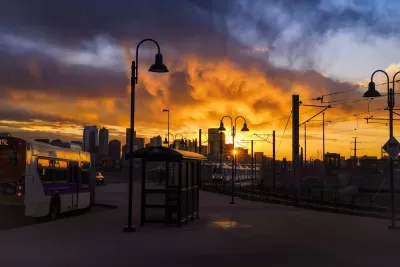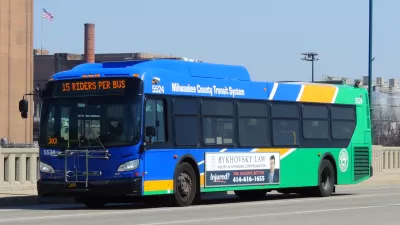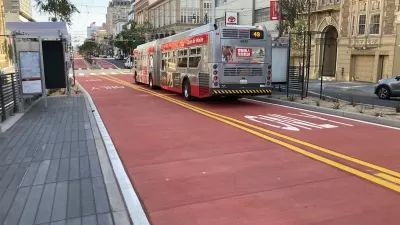More cities are leaning into bus rapid transit, a faster, cheaper alternative to light rail-based rapid transit systems.

Writing for Colorado Public Radio, Nathaniel Minor describes how the growing bus rapid transit (BRT) system in Minneapolis is inspiring local leaders from Denver. Denver is planning its own BRT system, dubbed the Lynx, which could be operational by 2030.
Some notable characteristics of Minneapolis’s BRT system include full-fledged stations with floor-level boarding, ticket machines and validators, seating, and shelter. Stations are spaced farther apart than typical local bus lines to reduce travel times. “Those improvements, along with other infrastructure changes, including technology that gives buses priority at intersections, all combine to speed up BRT buses up to 25 percent over old local routes.”
Notably, the BRT lines don’t have full dedicated lanes throughout, in part due to cost and the resistance to removing vehicle travel lanes. “In Denver, much of the East Colfax BRT line will be much closer to a bona fide bus rapid transit system compared to the Twin Cities’ lines.”
In Minneapolis, ridership went up by more than 30 percent on the city’s first two arterial bus lines. “And while general transit ridership in Minneapolis–Saint Paul has suffered since the pandemic, ridership on Metro Transit’s arterial BRT lines have held relatively steady.”
“The Denver region’s turn toward buses comes after RTD has spent billions of dollars over the last two decades on rail lines,” Minor explains. The shift will focus more transit service on dense urban corridors and prioritize underserved areas.
FULL STORY: For a peek at Denver’s rapid bus future, look to Minneapolis

Planetizen Federal Action Tracker
A weekly monitor of how Trump’s orders and actions are impacting planners and planning in America.

San Francisco's School District Spent $105M To Build Affordable Housing for Teachers — And That's Just the Beginning
SFUSD joins a growing list of school districts using their land holdings to address housing affordability challenges faced by their own employees.

The Tiny, Adorable $7,000 Car Turning Japan Onto EVs
The single seat Mibot charges from a regular plug as quickly as an iPad, and is about half the price of an average EV.

With Protected Lanes, 460% More People Commute by Bike
For those needing more ammo, more data proving what we already knew is here.

In More Metros Than You’d Think, Suburbs are Now More Expensive Than the City
If you're moving to the burbs to save on square footage, data shows you should think again.

The States Losing Rural Delivery Rooms at an Alarming Pace
In some states, as few as 9% of rural hospitals still deliver babies. As a result, rising pre-term births, no adequate pre-term care and "harrowing" close calls are a growing reality.
Urban Design for Planners 1: Software Tools
This six-course series explores essential urban design concepts using open source software and equips planners with the tools they need to participate fully in the urban design process.
Planning for Universal Design
Learn the tools for implementing Universal Design in planning regulations.
Smith Gee Studio
City of Charlotte
City of Camden Redevelopment Agency
City of Astoria
Transportation Research & Education Center (TREC) at Portland State University
US High Speed Rail Association
City of Camden Redevelopment Agency
Municipality of Princeton (NJ)





























